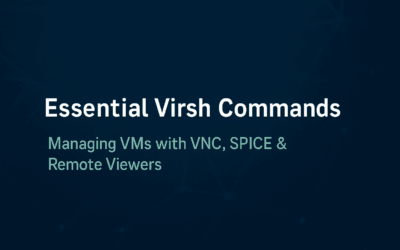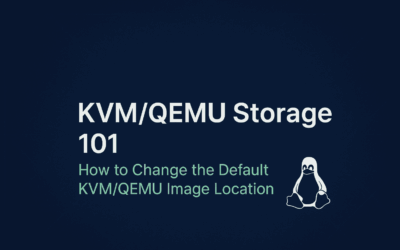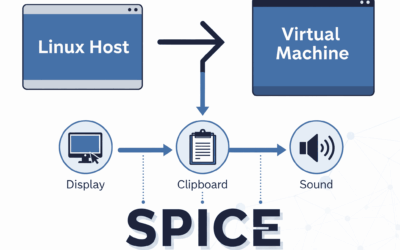Introduction Virsh (Virtual Shell) is the command-line interface for managing virtual machines and hypervisors through libvirt. This cheatsheet provides essential commands for daily VM management tasks, from basic operations like listing and controlling VMs to...
Sandbox99 Chronicles
From My Sandbox to Yours — Practical IT Insights.
Categories: Virtualization
How to Change the Default KVM/QEMU Image Location
Introduction "Have you ever run out of disk space on your root partition after creating just a few virtual machines? That’s because KVM and libvirt, by default, tuck away all your virtual disk images in /var/lib/libvirt/images. This default setting is fine for a quick...
Supercharge Your Linux VMs: Enabling Seamless Desktop with SPICE on KVM/QEMU
Introduction So, you're a seasoned Linux admin diving deeper into the world of virtualization with libvirt, KVM, and QEMU? Excellent choice! This powerful combination lets you run virtual machines (VMs) with near-native performance. But beyond just booting up a guest...
Secure Your Homelab: An OPNsense Configuration Deep Dive
Introduction Welcome back to our OPNsense blog series! If you've been following along, you've successfully selected your hardware, prepared your installation media, and completed the basic installation of the OPNsense firewall operating system. If you haven't, you can...
Secure Your Homelab: Installing OPNsense as a Virtual Firewall
Introduction Are you tired of the limitations of your consumer-grade router? As your homelab grows, so does the need for more granular control, enhanced security, and the flexibility to segment your network. Off-the-shelf routers are great for basic internet access,...
libvirt Networking: How to Create a VM Network with No Host or Internet Access
Creating an Isolated Internal Network for Virtual Machines 💻 Virtualization offers powerful tools for creating isolated environments. This post will walk you through setting up a custom internal network that's completely cut off from the host operating system (OS) and...






